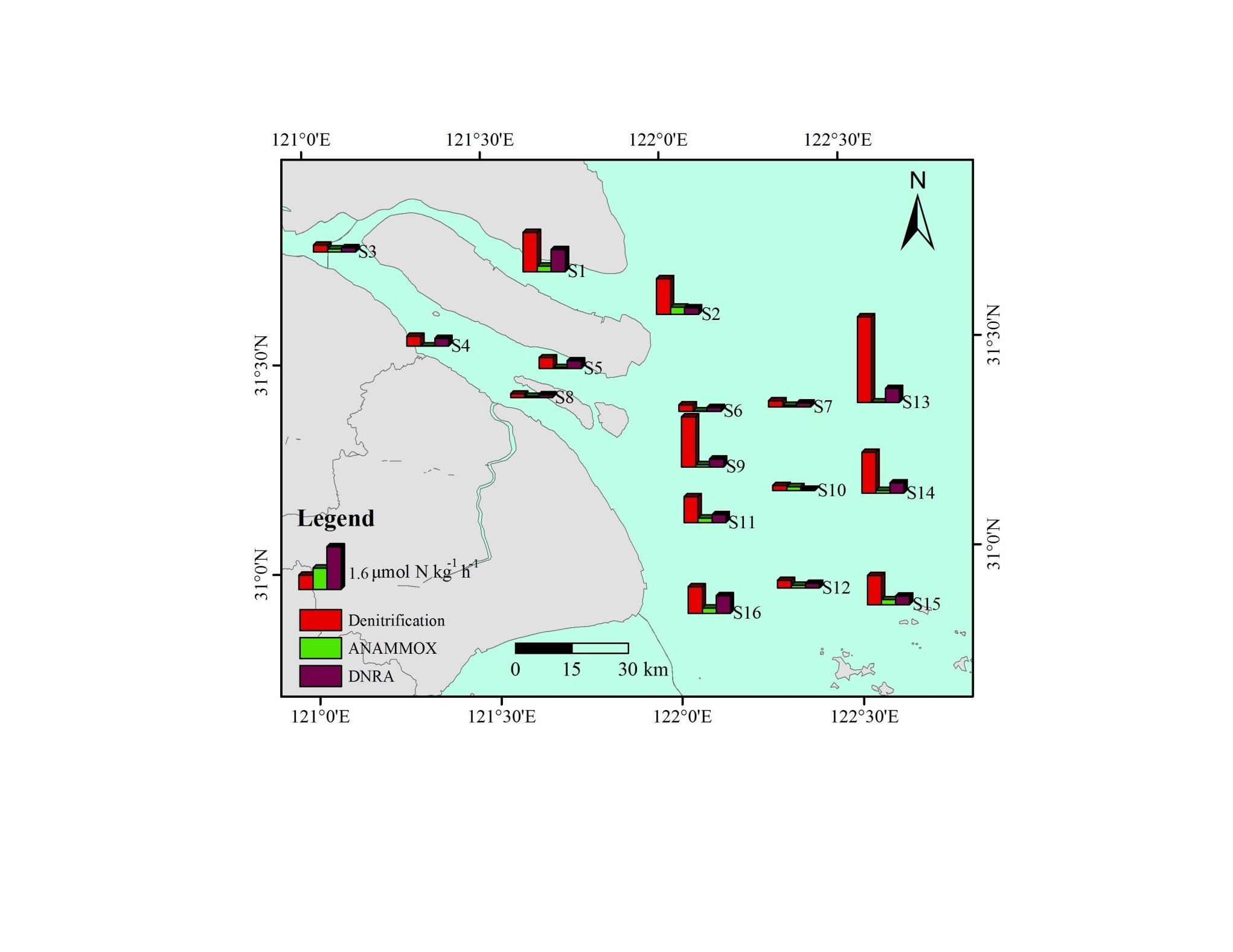Dissimilatory nitrate reduction processes and associated contribution to nitrogen removal in sediments of the Yangtze Estuary
Dissimilatory nitrate reduction processes, including denitrification, anaerobic ammonium oxidation (ANAMMOX), and dissimilatory nitrate reduction to ammonium(DNRA), play an important role in controlling the nitrate dynamics and fate in estuarine and coastal environments.We investigated potential rates of denitrification, ANAMMOX, and DNRA in the sediments of the Yangtze Estuary via slurry incubation experiments combined with isotope-tracing techniques to reveal their respective contributions to total nitrate reduction in this hypereutrophic estuarine ecosystem. Measured rates of denitrification, ANAMMOX, and DNRA ranged from 0.06 to 4.51 μmol Nkg-1 h-1, 0.01 to 0.52 μmol Nkg-1 h-1, and 0.03 to 0.89 μmol Nkg-1 h-1, respectively. These potential dissimilatory nitrate reduction process rates correlated significantly with salinity, sulfide, organic carbon, and nitrogen. Denitrification contributed 38–96%total nitrate reduction in the Yangtze Estuary, as compared to 3–45% for DNRA and 1–36% for ANAMMOX. In total, the denitrification and ANAMMOX processes removed approximately 25% of the external inorganic nitrogen transported annually into the estuary. In contrast, most external inorganic nitrogen was retained in the estuary and contributes substantially to the severe eutrophication of the Yangtze Estuary.
Fig. 1. Annual average rates of denitrification, anaerobic ammonium oxidation (ANAMMOX) and dissimilatory nitrate reduction to ammonium (DNRA) across the Yangtze Estuary
List of relate results:
-
Journal of Geophysical Research: Biogeosciences ,
2015 ,
120
: 1521-1531

